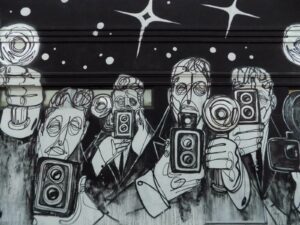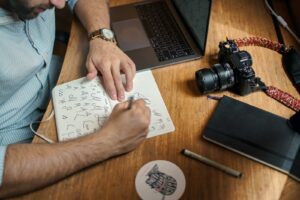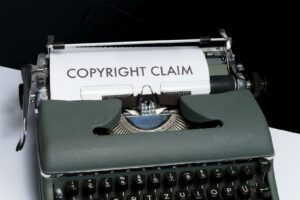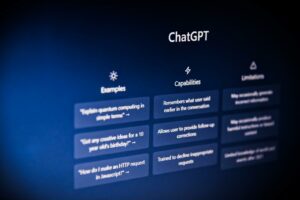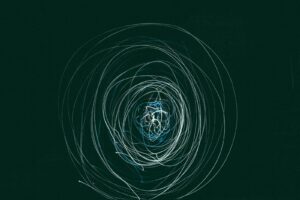Contents
Google “The Next Rembrandt” and you may be surprised to find out that this artwork was not, in fact, painted by Rembrandt.
Rather, the piece was created by an artificial intelligence (AI) system that scanned and analysed the 346 known paintings by the Dutch painter. Using facial recognition technology and deep learning algorithms, the AI machine produced a 3D-printed painting that closely resembles Rembrandt’s unique style yet remains a completely original work.
Copyright protection is readily available in cases where a person has used technology as a tool to assist with the creation of a work. But the rapid growth and continuing development in software and artificial intelligence fields raises important questions about works created by AI:
- Will works ‘created’ by AI be protected by copyright?
- If so, how would you even work out who owns the copyright over the work?
If your business is into software development or programming, advertising, or if you just have an interest in how AI will change the world of copyright, keep reading. We’ll dive into the nitty gritty of Australia’s system of copyright law, how it is likely to interact with AI-created works, and its commercial impact.
What Is The Law In Australia?
In Australia, the Copyright Act 1968 (Cth) (‘the Act’) deals with issues surrounding copyright and what works can be afforded such protection. Under the Act, original works can be protected by copyright, as long as certain criteria are met. This includes a requirement that the author (or the creator of the work) is a ‘qualified person’.
Who or what counts as a ‘qualified person’?
Section 32 of the Act defines a ‘qualified person’ as an “Australian citizen or person resident in Australia”. For those outside of Australia, we can look to the Copyright (International Protection) Regulations 1969 (Cth), which provides protection for foreign nationals from specified countries.
Obviously, AI systems aren’t human persons, let alone Australian citizens, and therefore cannot fulfil this requirement.
But let’s say that AI machines were able to be considered a ‘qualified person’ under the Act – the work itself would need to be original. In the High Court case of Sands & McDougall Pty Ltd v Robinson [1917] HCA 14, it was found that originality required “some independent intellectual effort” which was upheld in IceTV Pty Ltd v Nine Network Australia Pty Ltd [2009]. Does this “effort” have to be carried out by a human or can it be done by an AI system?
Well, this issue was tested slightly in Telstra Corporation Limited v Phone Directories Company Pty Ltd [2011]. In this case, the Federal Court found that copyright protection could not be given to telephone directories as they are “not the result of human authorship but [are] computer generated,” and therefore did not involve the necessary “independent intellectual effort”.
Since this case, technology and AI have drastically developed: they are far more sophisticated and arguably have the potential to be creative. If the works created by AI are creative and entirely new, the question of whether they should be protected by copyright is extremely important to the future of intellectual property and copyright.
Why Is Authorship So Important?
Copyright laws in Australia, as well as around the world, have generally envisioned the author of a work to be human. This is because the grant of copyright serves to protect and motivate human intellectual effort. It allows creators to not only make money from their work, but also incentivises them to continue making things that benefit the general public, such as entertainment or education.
Of course, this purpose is not necessarily applicable when it comes to AI-created works, since they do not involve human creativity and intellect. But what impact will this have commercially? If AI-created works are not protected by copyright because they do not have a human author, they will be free to be used and exploited by anyone. This could dampen efforts by companies or investors to develop AI systems that produce creative works.
Who Would Be The Author Of An AI-Created Work?
If AI-created works were to be protected by copyright, who should be considered the author of the work? Would it be the person who developed the code and algorithms that ultimately created the AI? Or the person who operated the AI machine that created the work? Or even the machine itself?
Looking to the UK, authorship of AI-created works is attributed to the creator of the machine or computer program. The UK Copyright, Designs and Patents Act states, “in the case of a literary, dramatic, musical or artistic work which is computer-generated, the author shall be taken to be the person by whom the arrangements necessary for the creation of the work are undertaken.”
By creating an exception to the requirement for a human author, the law provides due recognition and protection for the effort that goes into creating a program or machine that can produce original works on its own and without human intervention.
Potential Challenges
Providing protection for works generated by an AI machine could present several challenges for copyright law, especially in relation to the duration of the protection. There may also be issues around what happens in the event of copyright infringement — whether the AI-created work is infringed on, or whether it infringes on another work.
According to section 33 of the Copyright Act, copyright protection will generally last for 70 years after the author’s death. Seeing as AI machines don’t “die”, it would seem that the duration of copyright protection would be unlimited.
An option to overcome this challenge takes inspiration from the treatment of sound recordings and cinematic films, in which copyright subsists for 70 years after the work is made public. According to the Copyright Act, where the author is unknown, copyright also subsists for 70 years from the date of first being made public.
Another thing to consider: what happens if AI creates a work that is substantially identical or similar to an existing work protected by copyright? Who would be responsible for the infringement?
Or, in the alternative, if another work infringes on the copyright of the AI-created work, who would have standing to seek a remedy under copyright law? These questions are likely to be a hot topic for discussion in the near future.
So, What Now?
Whether you’re in the business of developing or creating AI programs, or if you’re considering using AI-created works, it’s important to know what rights and responsibilities you have when it comes to copyright.
At the moment, it looks like the law in Australia will not yet allow for AI-created works to attract copyright protection. However, as courts have yet to face these questions, only time will tell.
If you’d like to discuss your options further, our team of friendly and experienced lawyers are ready to help! For a free, no-obligations chat, call us on 1800 730 617 or email team@sprintlaw.com.au.
Get in touch now!
We'll get back to you within 1 business day.


